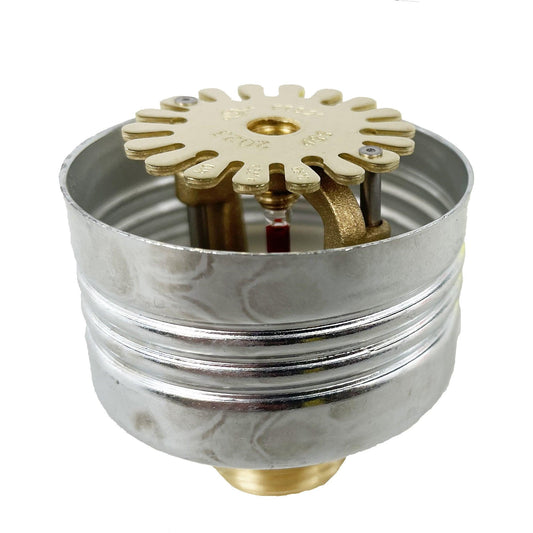Before you leave...
Take 20% off your first order
20% off
Enter the code below at checkout to get 20% off your first order

Shopify API
Fire Systems
Jul 31, 2021

Get answers to common questions about fire sprinkler heads, NFPA codes, and inspection tips. Perfect for contractors, plumbers, and fire protection professionals.
The four primary types are:
Related Products: Sprinkler Heads
Yes. Sprinklers are classified by response type (standard or quick), coverage area (standard vs. extended coverage), and specialty use (e.g., ESFR, corrosion-resistant, or residential sprinklers).
Related Products: Dry Pipe Valves | Pre-Action Valves
NFPA 13 is the standard for design and installation of automatic fire sprinkler systems. It governs placement, spacing, hazard classification, and water supply requirements.
Storage must be kept at least 18 inches below sprinkler deflectors to avoid blocking water spray. This ensures proper coverage during activation.
Sprinklers must also be replaced if damaged, corroded, painted, or previously activated.
Not always. Local codes may require exposed sprinkler piping to be painted red, but hidden piping often has no color requirement. Sprinkler heads themselves should never be painted.
This depends on pipe size, pressure, and flow rate. For example, a 2-inch pipe may support up to 8 sprinkler heads at once, while a 2½-inch pipe may support 15 heads. Always verify with NFPA 13 and local code.
Need help selecting the right fire protection components? Browse our Fire Valves and Sprinkler Heads collections.
Receive our latest updates about our products and promotions.
Thanks for subscribing!
This email has been registered!
Take 20% off your first order
Enter the code below at checkout to get 20% off your first order